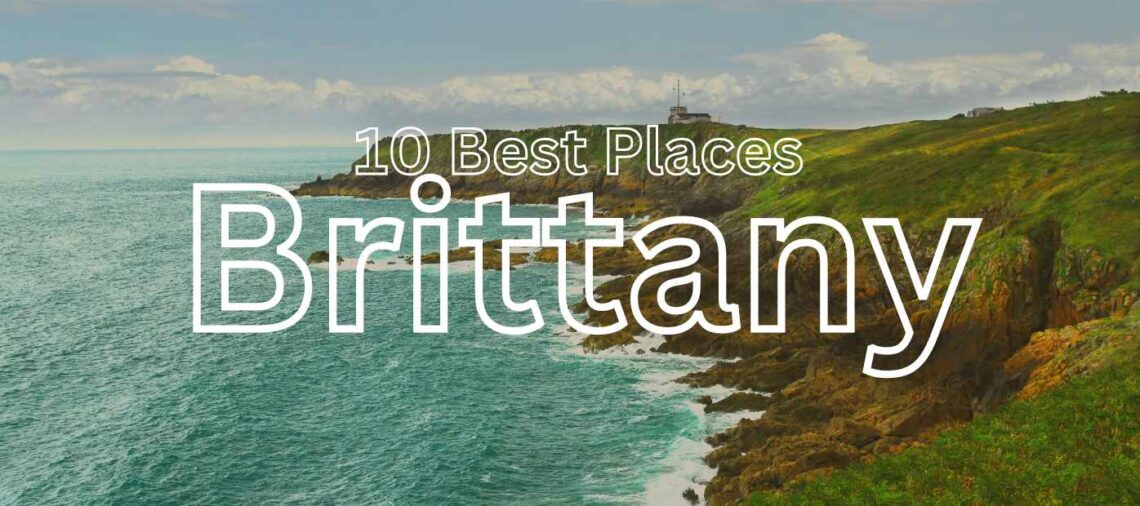Brittany is a beautiful region in northeastern France with a rich and diverse cultural heritage. Bounded by the sea and defined by its traditional character, Brittany offers a variety of attractions for travelers who love nature, history, art, and gastronomy. From quaint fishing villages and medieval towns to stunning coastal scenery and fairy-tale castles, Brittany has something for everyone. Here are the top 10 tourist attractions in Brittany that will leave you spellbound, in no particular order.
1. Saint-Malo
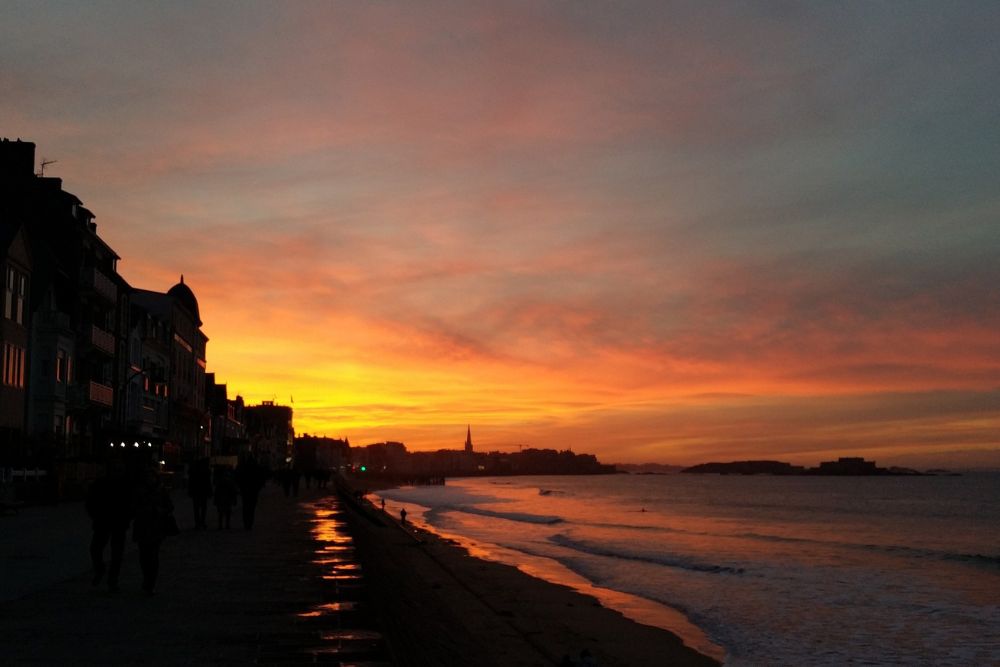
This quintessential Breton port is a former island near the mainland, surrounded by well-preserved medieval fortifications. Saint-Malo boasts a fascinating history as a stronghold of corsairs, privateers who raided enemy ships in the name of the French king. You can learn more about this maritime heritage at the Musée d’Histoire de la Ville et du Pays Malouin, housed in a 15th-century castle that also offers panoramic views from its tower.
The historic center (Vieille Ville) of Saint-Malo was largely destroyed during the Second World War, but was rebuilt in its original style, with granite houses that appear ancient. The atmospheric old cobblestone streets are full of shops, restaurants, and crêperies, where you can sample the local specialty of galettes (savory buckwheat crepes) and dessert crepes with toppings such as caramel, chocolate sauce, and fresh seasonal strawberries. The main square, Place Chateaubriand, is named after the famous writer and politician who was born in Saint-Malo.
One of the highlights of Saint-Malo is walking along the ramparts, which date back to the 12th century. A complete circuit takes about an hour and offers spectacular views of the town, the estuary, the sea, and the offshore islands. Among these islands are the Grand Bé, where Chateaubriand is buried, and the Petit Bé, where you can visit a 17th-century fort. Another island worth visiting is the Île du Cézembre, a natural reserve with sandy beaches and hiking trails.
Saint-Malo is also a great base for exploring the nearby attractions of Mont-Saint-Michel, a UNESCO World Heritage Site and one of the most visited monuments in France, and Dinard, a charming seaside resort with elegant villas and a casino.
2. Sentier des Douaniers
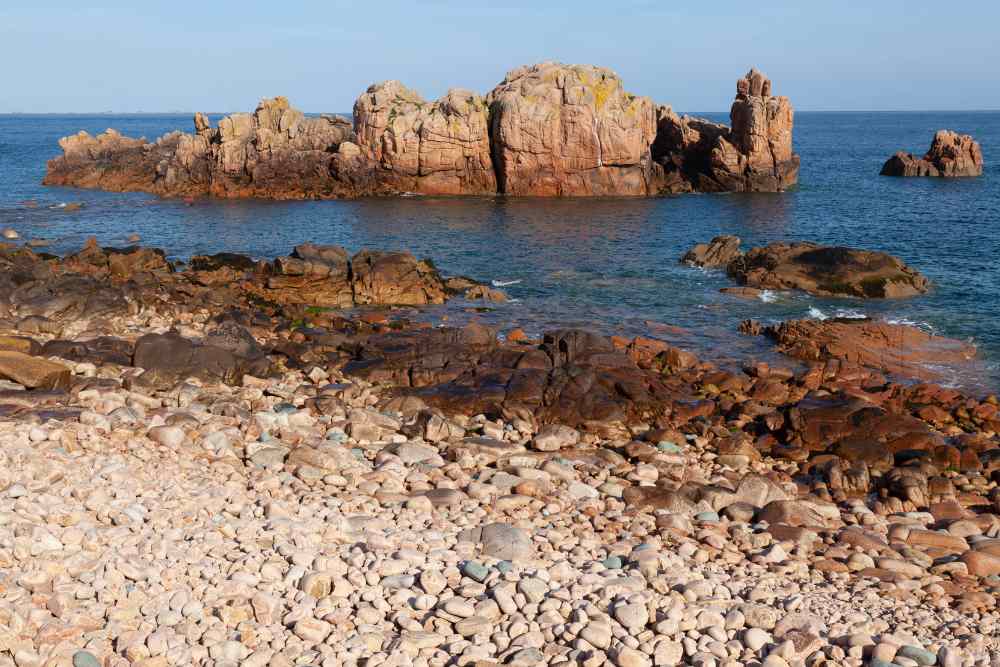
The Sentier des Douaniers (Customs Path) is a pedestrian path that follows the Pink Granite Coast, a stunning stretch of coastline in northern Brittany. The path was originally used by customs officers to patrol the shore and prevent smuggling, but today it is a popular hiking trail that showcases the natural beauty and diversity of the region.
The path runs for about 30 kilometers (19 miles) from Perros-Guirec to Ploumanac’h, passing through rocky promontories, sandy coves, pine forests, and moorlands. Along the way, you can admire the amazing rock formations that give the coast its name, sculpted by the wind and waves into shapes that resemble animals, faces, or objects. Some of the most famous rocks are the Napoleon’s Hat, the Witch, and the Rabbit.
The path also offers splendid views of the sea and the islands, such as the Sept-Îles (Seven Islands), a bird sanctuary that is home to puffins, gannets, and seals. You can take a boat trip to visit the islands and observe the wildlife, or enjoy a guided tour of the lighthouse on the Île aux Moines (Monks’ Island).
The best way to explore the Sentier des Douaniers is to walk at your own pace, stopping at the scenic spots and the charming villages along the way. You can also rent a bike or a kayak to discover the coast from a different perspective. The path is well-marked and suitable for all levels of fitness, but be prepared for some steep sections and uneven terrain.
3. Parc du Thabor
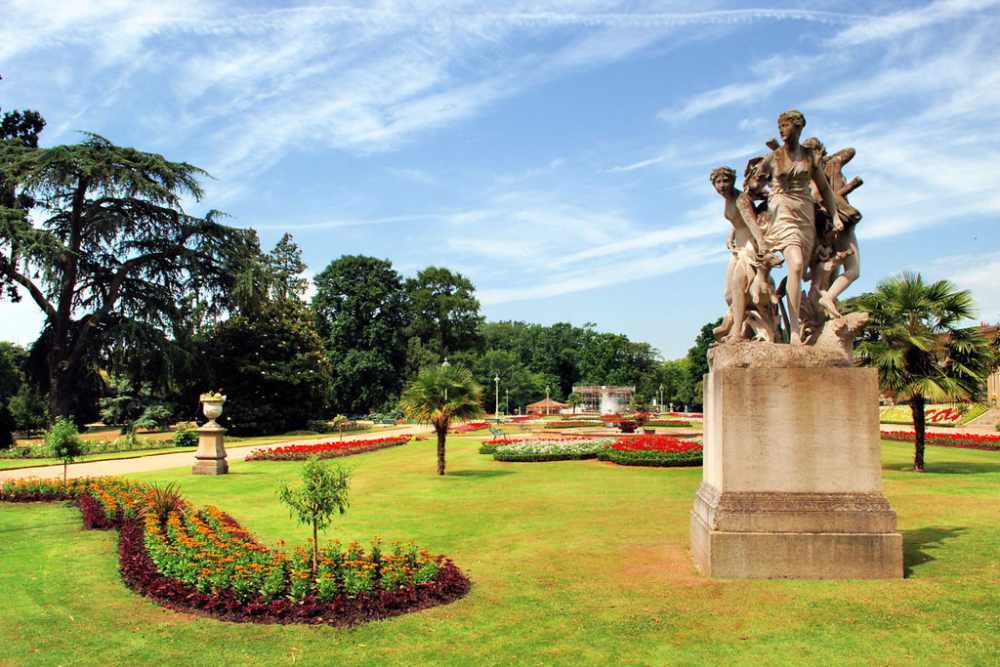
The Parc du Thabor is a magnificent public park in the heart of Rennes, the capital of Brittany. The park covers 10 hectares (25 acres) and combines a French-style garden, an English-style garden, a botanical garden, and a rose garden. It is a peaceful oasis of greenery and flowers, where you can relax, stroll, picnic, or play.
The park was created in the 19th century on the site of a former Benedictine abbey, whose name derived from Mount Tabor, a biblical mountain in Israel. The park preserves some of the abbey’s buildings, such as the orangerie, the chapel, and the convent. It also features a bandstand, a fountain, a waterfall, a pond, a cave, and a playground.
The park is especially renowned for its rose garden, which has more than 2,000 varieties of roses from around the world. The rose garden has an added attraction – reading the names of each type of rose is a journey in time jumping from nobility to celebrities. The best time to visit the park is in spring and summer, when the roses are in full bloom and the park hosts concerts and events.
The Parc du Thabor is open every day from dawn to dusk, and admission is free. It is easily accessible by public transport or on foot from the city center. The park is a must-see for anyone visiting Rennes, as it is one of the most beautiful and romantic places in the city.
4. Grand Site Naturel de Ploumanac’h
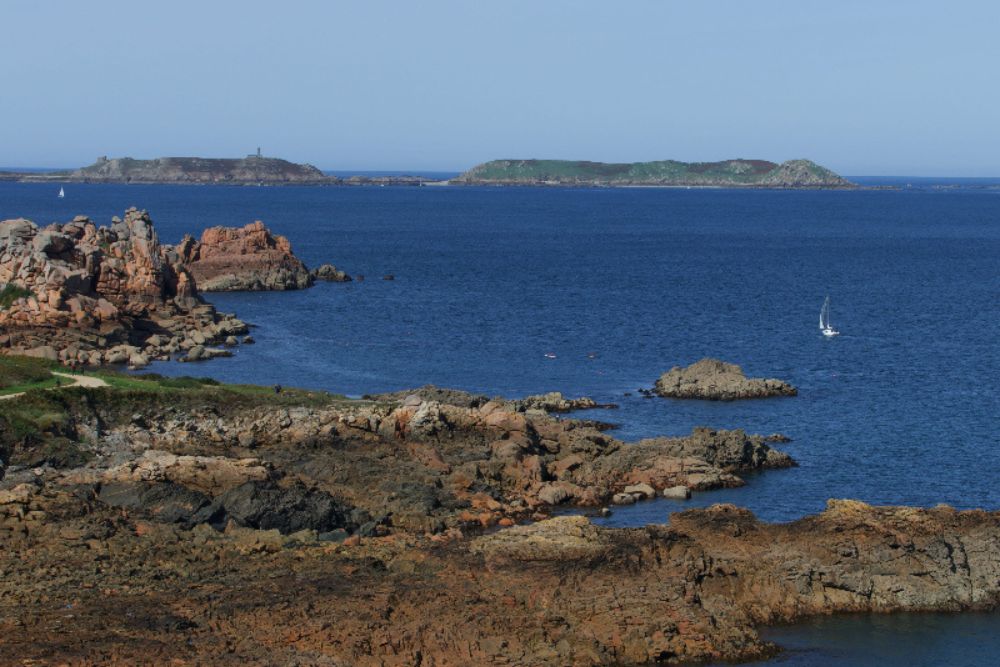
The Grand Site Naturel de Ploumanac’h is a natural reserve that encompasses the village of Ploumanac’h and its surroundings, on the Pink Granite Coast. The reserve is part of the Natura 2000 network, a European initiative to protect biodiversity and natural habitats. The reserve aims to preserve the unique landscape and flora of the area, as well as to promote sustainable tourism and education.
The main attraction of the reserve is the extraordinary scenery of the pink granite rocks, which contrast with the blue sea and the green vegetation. The rocks have been eroded by the elements for millions of years, creating surreal shapes and patterns. Some of the rocks have names, such as the Sphinx, the Turtle, and the Mushroom. The rocks are best seen at sunset, when they glow with a warm pink hue.
The reserve also has a rich and varied flora, with more than 800 species of plants, some of which are rare or endemic. You can discover the different ecosystems of the reserve, such as the maritime heath, the dune grassland, the marsh, and the forest. The reserve is home to many birds, insects, and mammals, such as the European otter, the badger, and the fox.
The best way to explore the reserve is to follow the Sentier des Douaniers, which passes through the village of Ploumanac’h and along the coast. You can also visit the Phare de Ploumanac’h (Ploumanac’h Lighthouse), a 19th-century lighthouse built on a pink granite rock, which offers a splendid view of the bay. Another attraction is the Chapelle Saint-Guirec (Saint-Guirec Chapel), a 12th-century chapel that stands on a small island, connected to the mainland by a causeway. The chapel has a statue of Saint Guirec, a Breton saint who is said to have arrived here on a stone boat. According to legend, if you place a needle on the saint’s nose and it stays there, your wish will come true.
The Grand Site Naturel de Ploumanac’h is open all year round, and admission is free. You can reach the reserve by car, bus, or bike from Perros-Guirec, the nearest town. The reserve is a must-see for nature lovers and photographers, as it offers a stunning and unforgettable spectacle.
5. Carnac
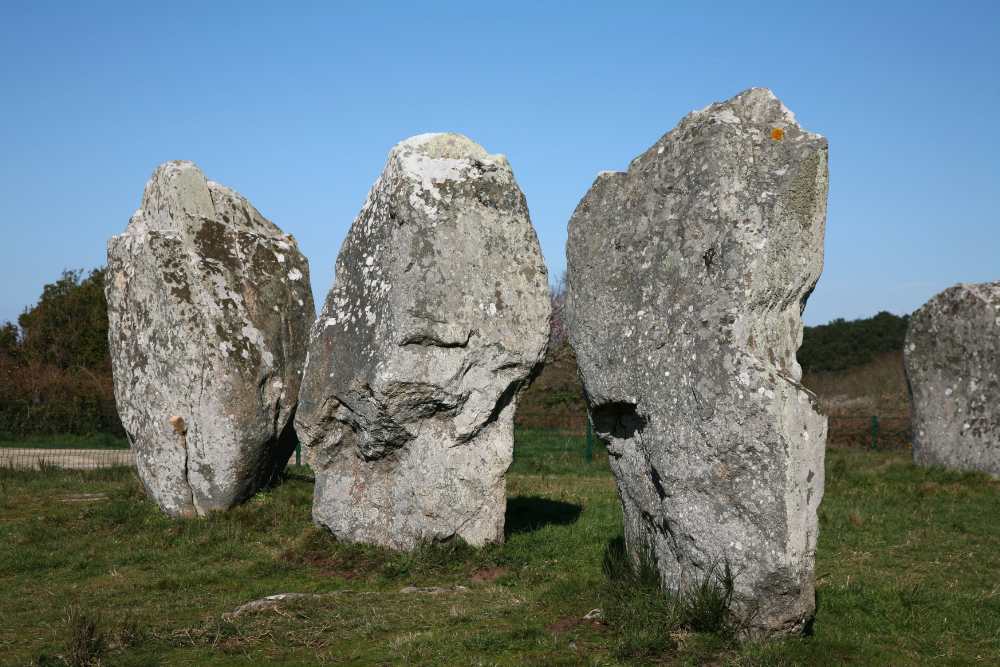
Carnac is a small town in southern Brittany, famous for its prehistoric megaliths, or large stones. The megaliths of Carnac are the largest and most impressive collection of such monuments in the world, dating back to the Neolithic period, between 4500 and 2000 BC. The megaliths are arranged in rows, circles, and tombs, covering an area of about 4 square kilometers (1.5 square miles).
The most remarkable site is the Alignements de Carnac (Carnac Alignments), which consist of more than 3,000 standing stones, aligned in 11 rows that stretch for about 4 kilometers (2.5 miles). The stones vary in size and shape, from small pebbles to huge boulders. The purpose and meaning of the alignments are still a mystery, but some theories suggest that they were used for astronomical, religious, or social purposes.
Another interesting site is the Tumulus de Saint-Michel (Saint-Michel Mound), a large artificial hill that contains a burial chamber. The mound is topped by a 17th-century chapel dedicated to Saint Michael, the patron saint of Carnac. The chapel offers a panoramic view of the town and the surrounding countryside.
The megaliths of Carnac are a UNESCO World Heritage Site and a national monument of France. They are open to the public all year round, but access is restricted to protect them from erosion and vandalism. You can visit the megaliths on foot, by bike, or by a guided tour. You can also learn more about the history and culture of the megaliths at the Musée de Préhistoire de Carnac (Carnac Prehistory Museum), which displays artifacts, models, and interactive exhibits.
Carnac is not only a place of ancient history, but also a lively seaside resort with sandy beaches, a marina, a casino, and a spa. You can enjoy various activities such as sailing, surfing, fishing, golfing, and horse riding. You can also taste the local cuisine, which includes seafood, crepes, cider, and butter cakes.
6. Quimper
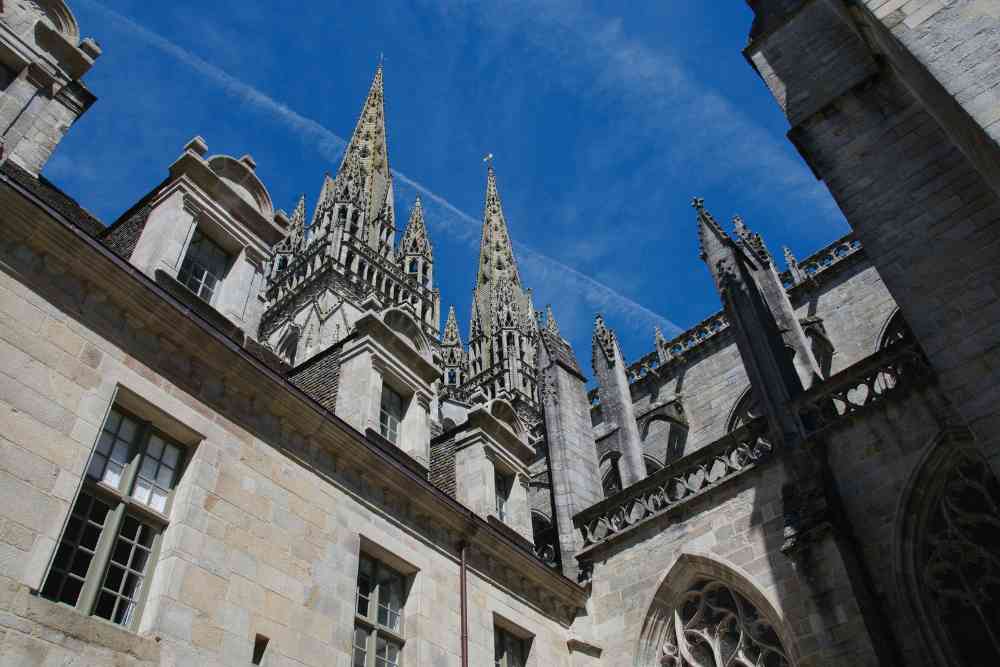
Quimper is the oldest city in Brittany and the capital of the Finistère department. It is situated at the confluence of the Odet and Steir rivers, which form a picturesque setting for the city. Quimper has a rich and colorful history, dating back to the Roman times, when it was a prosperous trading center. It later became the seat of the bishops of Cornouaille, a historical region of Brittany, and the capital of the Duchy of Brittany.
Quimper is renowned for its architectural and artistic heritage, which reflects its cultural identity and diversity. The most emblematic monument of the city is the Cathédrale Saint-Corentin (Saint-Corentin Cathedral), a Gothic masterpiece that dominates the skyline. The cathedral was built between the 13th and the 15th centuries, and features two soaring spires, a remarkable stained-glass window, and a fine organ. The cathedral is dedicated to Saint Corentin, the first bishop of Quimper and the patron saint of the city.
Another attraction of Quimper is the Quartier de Locmaria (Locmaria Quarter), the oldest part of the city, located on the right bank of the Odet. Here you can find the Église Notre-Dame-de-Locmaria (Locmaria Church), a Romanesque church that dates back to the 11th century, and the Musée Départemental Breton (Breton Departmental Museum), which showcases the history, art, and traditions of Brittany. The museum is housed in a former bishop’s palace, and displays a collection of costumes, jewelry, furniture, pottery, and paintings.
Quimper is also famous for its pottery, which has a distinctive style and quality. You can visit the Faïencerie Henriot-Quimper (Henriot-Quimper Pottery), a factory and a museum that produces and exhibits the traditional Quimper pottery, decorated with floral, geometric, or figurative motifs. You can also buy some of the pottery as a souvenir or a gift.
Quimper is a charming and lively city, with a variety of events and festivals throughout the year. One of the most popular ones is the Festival de Cornouaille (Cornouaille Festival), which celebrates the Breton culture and music every July. The festival features concerts, parades, dances, and competitions, and attracts thousands of visitors and performers.
7. Château de Fougères
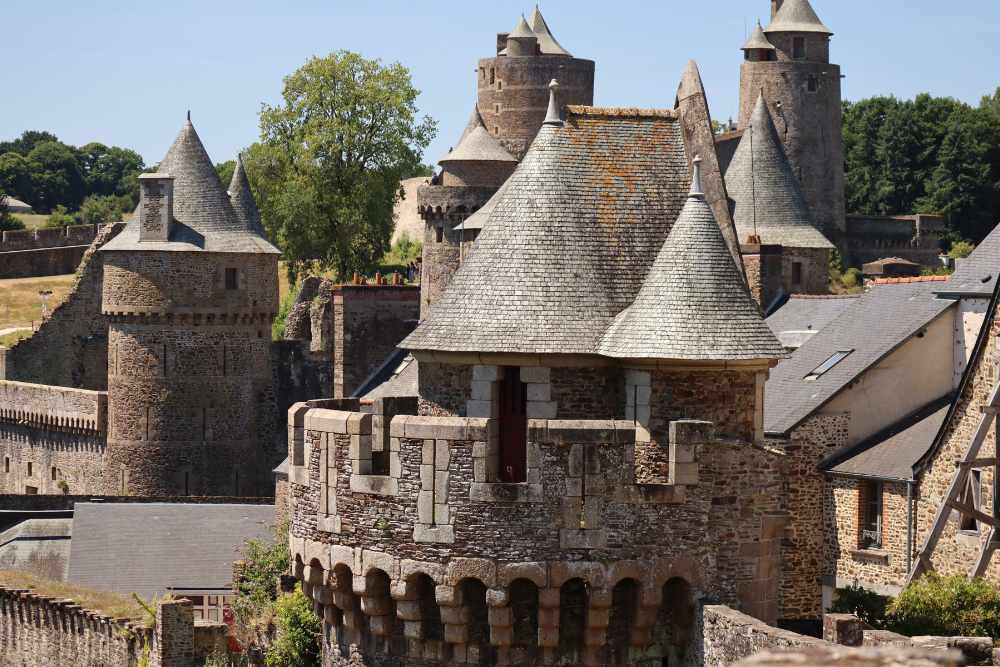
The Château de Fougères (Fougères Castle) is one of the largest and most impressive medieval castles in Europe, located in the town of Fougères, in eastern Brittany. The castle was built between the 12th and the 15th centuries, and was the scene of many battles and sieges, especially during the Hundred Years’ War and the Wars of Religion. The castle was also the residence of several noble families, such as the Lusignans, the Montforts, and the La Trémoilles.
The castle consists of three enclosures, each with its own defensive system, surrounded by a moat and a wall. The first enclosure contains the oldest part of the castle, the Romanesque keep, which dates back to the 12th century. The second enclosure contains the main residential buildings, such as the hall, the chapel, and the tower of the Duchess Anne, named after the last duchess of Brittany. The third enclosure contains the artillery tower, the gatehouse, and the drawbridge.
The castle is a remarkable example of military architecture, with a complex and ingenious design. It has 13 towers, each with a different shape and function, and a network of underground passages and galleries. The castle also has a collection of medieval weapons and armor, as well as a model of the castle as it was in the 15th century.
The castle is open to the public all year round, and offers guided tours, audio guides, and interactive exhibits. You can also enjoy a panoramic view of the town and the countryside from the top of the towers. The castle is a national monument of France and a major tourist attraction in Brittany. It is also the setting of several legends and stories, such as the legend of the fairy Mélusine, who is said to have built the castle with her magic.
8. Pointe du Raz
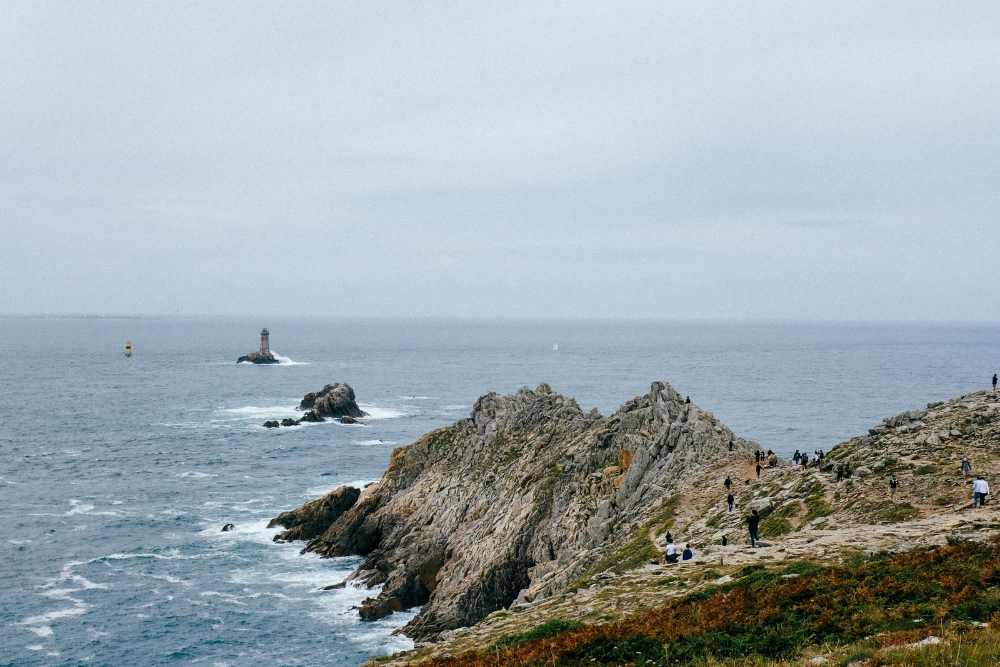
The Pointe du Raz is the westernmost point of mainland France, located in the Finistère department. It is a rocky headland that juts out into the Atlantic Ocean, facing the force of the wind and waves. The Pointe du Raz is a spectacular natural site, with dramatic cliffs, jagged rocks, and wild vegetation. It is also a place of legend and history, as it was a strategic location for navigation and defense.
The Pointe du Raz is part of the Parc Naturel Régional d’Armorique (Armorique Regional Natural Park), a protected area that covers the western part of Brittany. The park aims to preserve the natural and cultural heritage of the region, as well as to promote sustainable development and tourism. The park offers a variety of activities and attractions, such as hiking, biking, kayaking, fishing, and birdwatching.
The best way to discover the Pointe du Raz is to walk along the coastal path, which offers stunning views of the sea and the islands. You can also visit the Phare de la Vieille (Old Lady Lighthouse), a 19th-century lighthouse that stands on a rock in the middle of the water, and the Chapelle Sainte-Anne (Saint Anne Chapel), a 17th-century chapel that overlooks the bay. You can also learn more about the history and culture of the Pointe du Raz at the Maison du Site (Site House), a visitor center that displays exhibits, films, and models.
The Pointe du Raz is open all year round, and admission is free. You can reach the site by car, bus, or bike from Audierne, the nearest town. The Pointe du Raz is a must-see for nature lovers and adventurers, as it offers a unique and unforgettable experience.
9. Brocéliande Forest
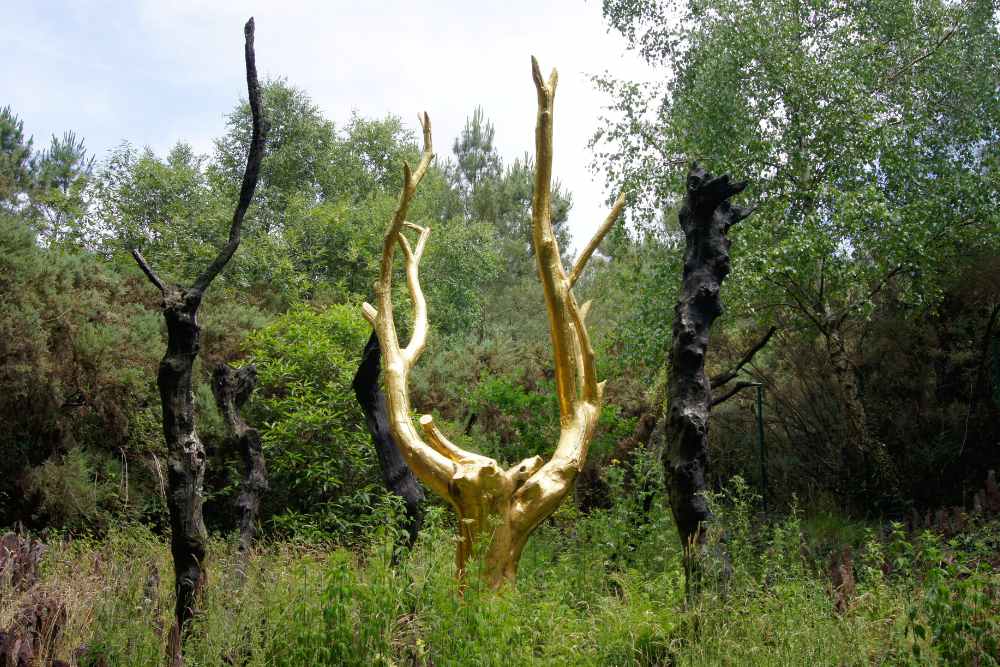
The Brocéliande Forest is a mythical forest in central Brittany, associated with the legends of King Arthur and the Knights of the Round Table. The forest is said to be the home of the wizard Merlin, the fairy Viviane, and the enchantress Morgane, as well as the site of many magical and mysterious events, such as the quest for the Holy Grail, the fountain of youth, and the valley of no return.
The Brocéliande Forest is not a single forest, but a collection of several forests, such as the Paimpont Forest, the Quénécan Forest, and the Lanouée Forest. The forest covers an area of about 7,000 hectares (17,300 acres) and has a diverse flora and fauna, with oak, beech, pine, and chestnut trees, as well as deer, boar, fox, and owl.
The forest is also rich in historical and cultural heritage, with many monuments and sites that evoke the legends of Brocéliande. You can visit the Tombeau de Merlin (Merlin’s Tomb), a megalithic monument that marks the burial place of the wizard, the Fontaine de Barenton (Barenton Fountain), a spring where Merlin and Viviane met and fell in love, and the Val sans Retour (Valley of No Return), a valley where Morgane trapped the unfaithful lovers of the knights. You can also see the Château de Comper (Comper Castle), a 13th-century castle that houses the Centre de l’Imaginaire Arthurien (Arthurian Imaginary Center), a museum and a cultural center that celebrates the legends of Brocéliande.
The Brocéliande Forest is open to the public all year round, and admission is free. You can explore the forest on foot, by bike, or by horse, following the marked trails and the signs that indicate the legendary sites. You can also join a guided tour, a workshop, or a show, organized by the Centre de l’Imaginaire Arthurien or by local associations. The forest is a must-see for fans of fantasy and folklore, as it offers a magical and enchanting atmosphere.
10. Vannes
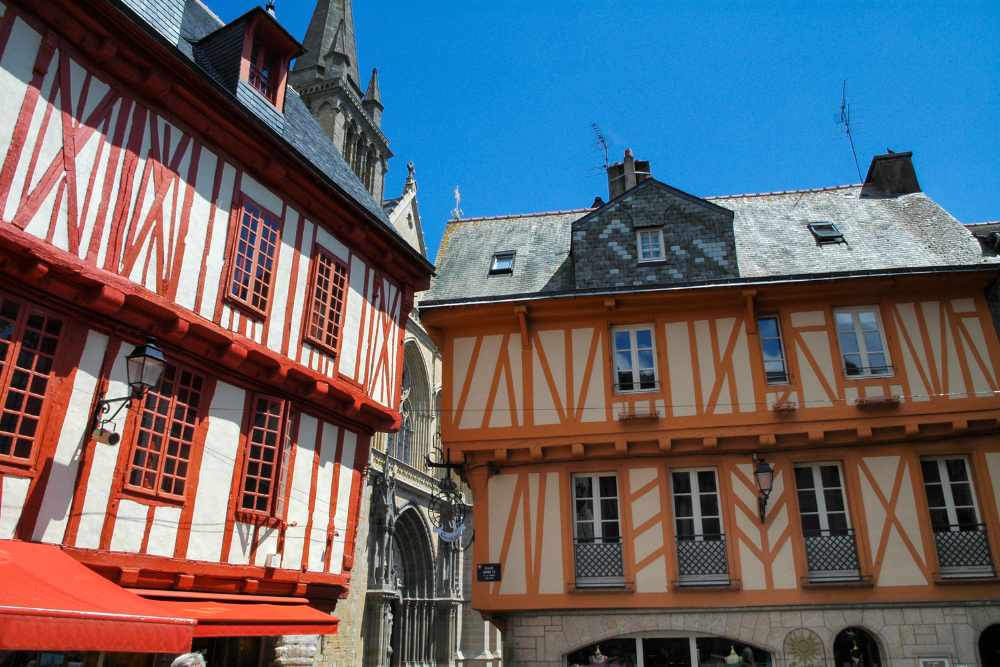
Vannes is a charming city in southern Brittany, located on the Gulf of Morbihan, a large bay dotted with islands. Vannes is the capital of the Morbihan department and has a long and rich history, dating back to the Roman times, when it was a fortified town. It later became the seat of the dukes of Brittany, and the scene of many historical events, such as the War of the Breton Succession and the French Revolution.
Vannes is known for its well-preserved medieval and Renaissance architecture, which gives the city a distinctive character and charm. The most attractive part of the city is the old town (Vieille Ville), enclosed by ramparts that date back to the 13th and 14th centuries. The old town has many narrow and winding streets, lined with half-timbered houses that display colorful facades and carved wooden beams. The old town also has many monuments and landmarks, such as the Cathédrale Saint-Pierre (Saint Peter Cathedral), a Gothic and Romanesque edifice that contains the tomb of Saint Vincent Ferrer, a 15th-century preacher and miracle worker, the Hôtel de Ville (City Hall), a 17th-century building that features a clock tower and a belfry, and the Château de l’Hermine (Hermine Castle), a 15th-century castle that was the residence of the dukes of Brittany and now hosts exhibitions and events.
Vannes is also a lively and dynamic city, with a variety of cultural and recreational activities. You can visit the Musée de la Cohue (Cohue Museum), a former medieval market hall that displays a collection of paintings and sculptures, the Musée d’Histoire et d’Archéologie (History and Archaeology Museum), which showcases the history and heritage of Vannes and Brittany, and the Aquarium de Vannes (Vannes Aquarium), which exhibits the marine life of the Gulf of Morbihan and the tropical seas. You can also enjoy the Jardin des Remparts (Ramparts Garden), a beautiful park that surrounds the old town, the Port de Plaisance (Marina), a lively area with boats, cafes, and restaurants, and the Marché des Lices (Lices Market), a traditional market that takes place every Wednesday and Saturday, where you can buy fresh and local products.
Vannes is a great base for exploring the Gulf of Morbihan, a natural wonder that is considered one of the most beautiful bays in the world. You can take a boat trip to visit the islands, such as the Île aux Moines (Monks’ Island), the Île d’Arz (Arz Island), and the Île de Gavrinis (Gavrinis Island), which has a remarkable megalithic tomb. You can also enjoy various activities such as sailing, kayaking, fishing, hiking, and biking. The Gulf of Morbihan is also a paradise for birdwatchers, as it hosts more than 200 species of birds, such as herons, egrets, cormorants, and gulls.

